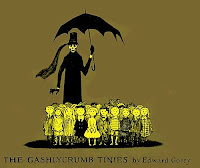 A couple of years ago, Jim Carrey portrayed an American Christmas icon, a character loved by young and old but not very well known in Belgium until then. He has a fat little tummy but he isn’t Santa, he’s fury but he isn’t Rudolph (who has always been a personal favorite of mine), he’s green so he’s none other than the Grinch. The Grinch who stole Christmas to be precise.
A couple of years ago, Jim Carrey portrayed an American Christmas icon, a character loved by young and old but not very well known in Belgium until then. He has a fat little tummy but he isn’t Santa, he’s fury but he isn’t Rudolph (who has always been a personal favorite of mine), he’s green so he’s none other than the Grinch. The Grinch who stole Christmas to be precise. The Grinch (among many other popular characters) was created by Theodor Seuss Geisel aka Dr. Seuss. He was an American author and cartoonist whose children’s books have now become classics. Plump  and outlandish creatures were his trademarks combined rhyming texts and dynamic drawings. 1957’s How the Grinch Stole Christmas is a prime example of his quirky yet heartwarming creativity. In this story, the Grinch is a bitter little critter living in a cave on Mount Crumpit looking down on Whoville, home of the merry Whos. Besides being fat and fury, he has another problem namely his heart is two sizes too small. Luckily he has Max, his loyal pet pooch who has to masquerade as a reindeer when the Grinch decides to go down to Whoville to put a stop to all this Christmas nonsense. If he can’t have fun, no one can. But naturally it wouldn't be Christmas (or a children’s book for that matter) if all wasn’t well in the end.
and outlandish creatures were his trademarks combined rhyming texts and dynamic drawings. 1957’s How the Grinch Stole Christmas is a prime example of his quirky yet heartwarming creativity. In this story, the Grinch is a bitter little critter living in a cave on Mount Crumpit looking down on Whoville, home of the merry Whos. Besides being fat and fury, he has another problem namely his heart is two sizes too small. Luckily he has Max, his loyal pet pooch who has to masquerade as a reindeer when the Grinch decides to go down to Whoville to put a stop to all this Christmas nonsense. If he can’t have fun, no one can. But naturally it wouldn't be Christmas (or a children’s book for that matter) if all wasn’t well in the end.
If you want to indulge in some good old-fashioned holiday fun, I suggest you sit back and enjoy the merry musings of Dr. Seuss and have a wonderful Christmas!

















































